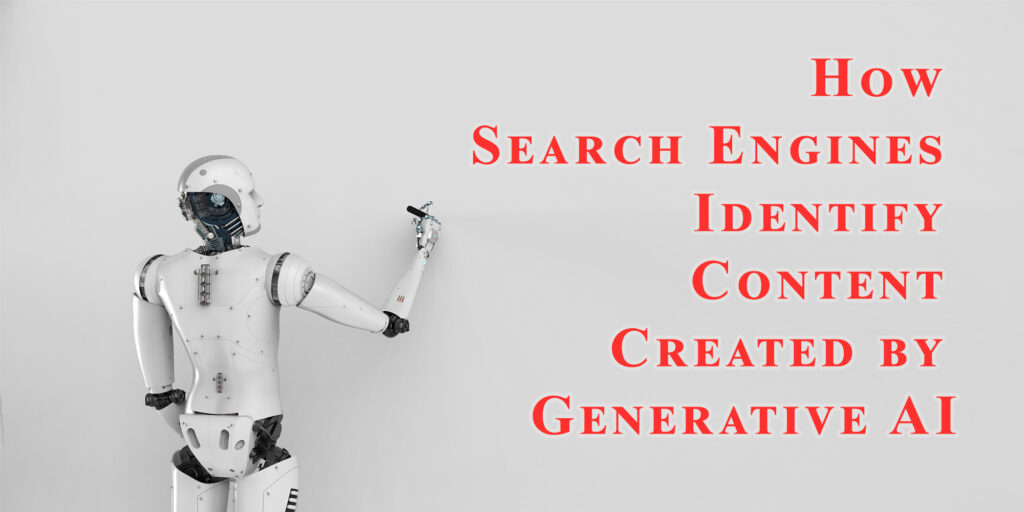In recent years, the advent of generative artificial intelligence (AI) has revolutionized content creation. From articles and blog posts to product descriptions and social media updates, AI algorithms are capable of producing high-quality, human-like text at scale. While this technology offers numerous benefits, it also raises questions about authenticity and transparency. How can search engines distinguish between content created by humans and content generated by AI? In this article, we’ll explore the methods search engines use to identify AI-generated content and the implications for SEO and content creators.
1. Understanding Generative AI
Generative AI, also known as natural language generation (NLG), refers to the technology that enables computers to produce human-like text. These systems are trained on vast datasets of language and use sophisticated algorithms to generate coherent and contextually relevant content. Some popular examples of generative AI include OpenAI’s GPT models, Google’s BERT, and Microsoft’s Turing models.
2. The Rise of AI-Generated Content
With the proliferation of generative AI platforms, the volume of AI-generated content on the internet has skyrocketed. Businesses and content creators leverage these tools to automate content production, reduce costs, and increase efficiency. From e-commerce platforms generating product descriptions to news outlets automating article writing, AI is reshaping the digital landscape.
3. Challenges in Identifying AI-Generated Content
Despite advancements in AI technology, distinguishing between AI-generated and human-created content remains a challenge. Generative models have become increasingly adept at mimicking human writing styles, making it difficult for traditional methods of detection to accurately differentiate between the two.
3.1 Metadata and Attribution
One approach search engines use to identify AI-generated content is through metadata and attribution. Content created by AI platforms often includes metadata indicating its automated origin. This metadata can include tags such as “generated by AI” or “powered by [AI platform].” By analyzing this metadata, search engines can flag content that is likely AI-generated and adjust their ranking algorithms accordingly.
3.2 Linguistic Analysis
Another method for identifying AI-generated content involves linguistic analysis. Generative AI models have certain linguistic patterns and tendencies that differ from human writing. For example, AI-generated content may exhibit less variability in sentence structure, use of uncommon vocabulary, or unnatural transitions between paragraphs. Search engines can employ natural language processing (NLP) techniques to analyze these linguistic features and identify content that deviates from human norms.
3.3 Behavioral Signals
In addition to linguistic analysis, search engines may also consider behavioral signals to detect AI-generated content. For instance, if a website consistently publishes large volumes of content within short timeframes, it may raise suspicions of automated content generation. Similarly, if a piece of content receives minimal user engagement or interaction, it may indicate that it lacks the authenticity and relevance typically associated with human-created content.
3.4 Image and Video Analysis
While much of the focus is on textual content, AI algorithms are also capable of generating images and videos. Search engines can leverage image and video analysis techniques to identify content that may have been generated by AI. This includes examining the visual quality, composition, and metadata associated with multimedia content to assess its authenticity.

4. Implications for SEO and Content Creators
The ability of search engines to identify AI-generated content has significant implications for SEO strategies and content creators. As search algorithms become more adept at detecting automated content, websites that rely heavily on AI-generated content may experience challenges in achieving high rankings. Conversely, platforms that prioritize authentic, human-created content may see improvements in search visibility and user engagement.
5. Ethical Considerations
Beyond the technical aspects, the rise of AI-generated content raises important ethical considerations. As AI becomes increasingly proficient at mimicking human creativity and expression, questions arise about transparency, intellectual property, and the erosion of trust in online information. Content creators and businesses must navigate these ethical complexities while harnessing the power of AI for content production.
6. The Evoluion Of Digtial Information
The ability of search engines to identify AI-generated content represents a crucial development in the evolution of digital information. By leveraging metadata, linguistic analysis, behavioral signals, and multimedia analysis, search algorithms can detect and differentiate between AI-generated and human-created content. This has profound implications for SEO, content creators, and the broader digital ecosystem. As AI technology continues to advance, the need for transparency, authenticity, and ethical responsibility in content creation becomes increasingly paramount.
For more information, visit Bel Oak Marketing.





